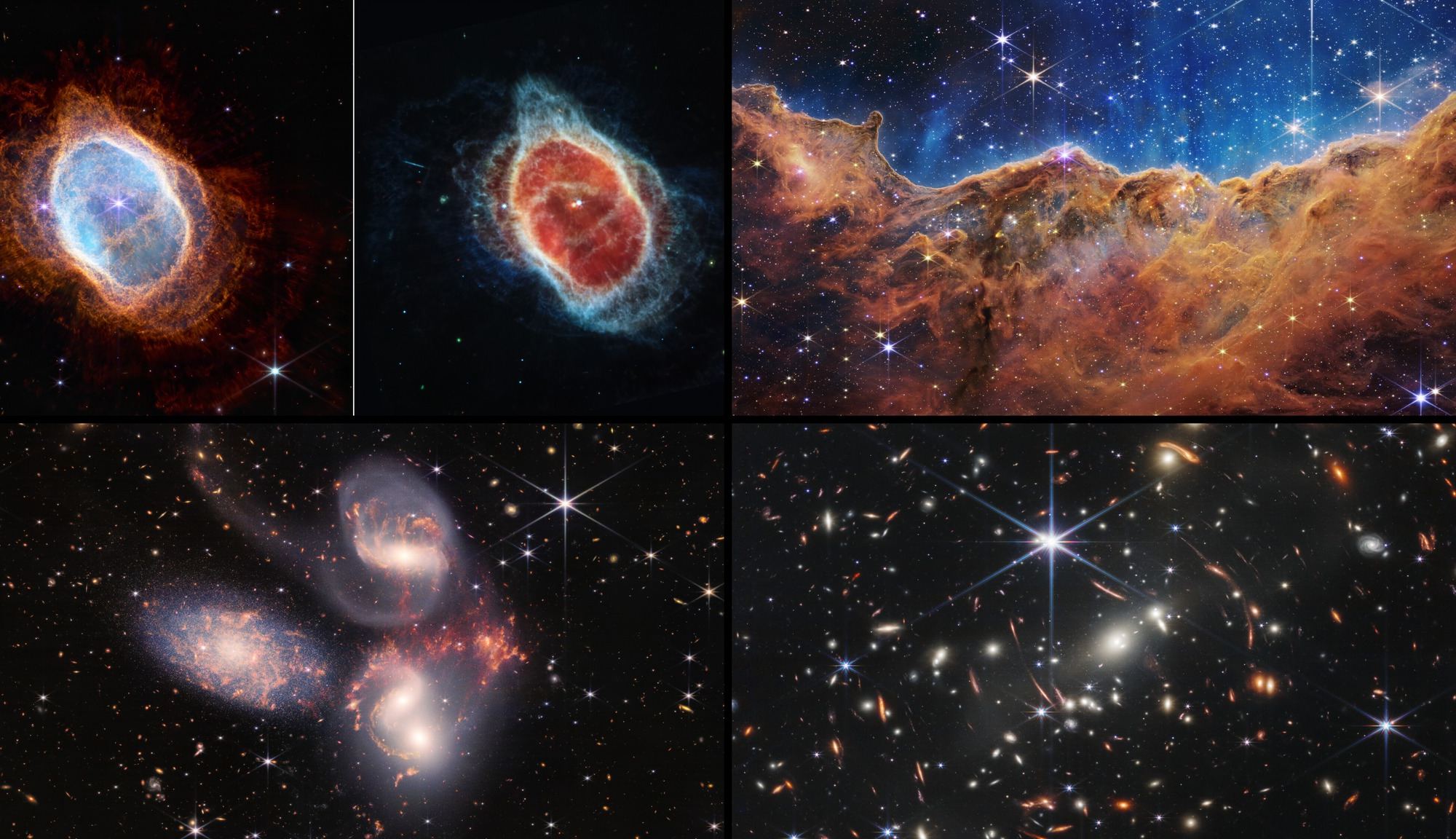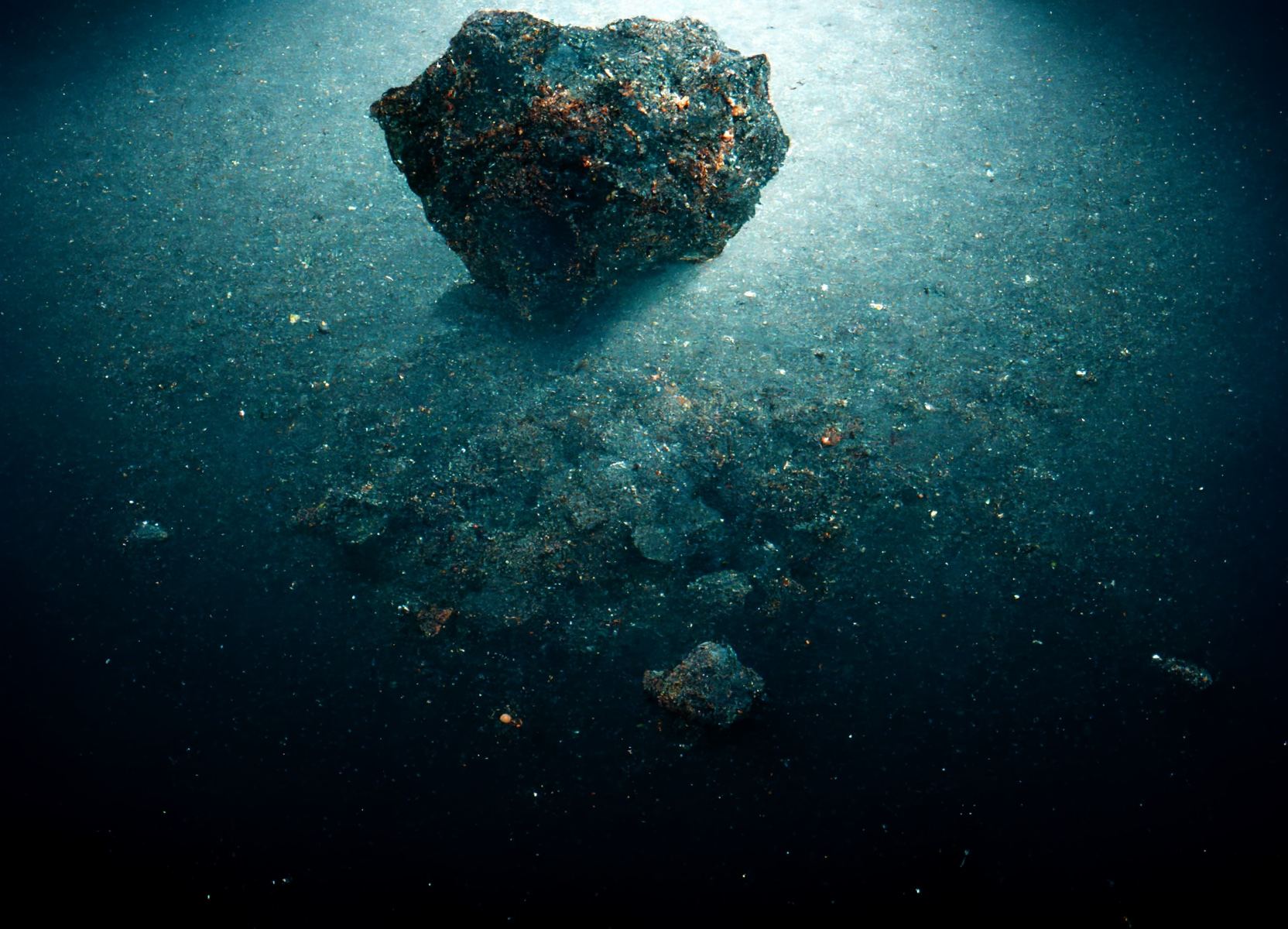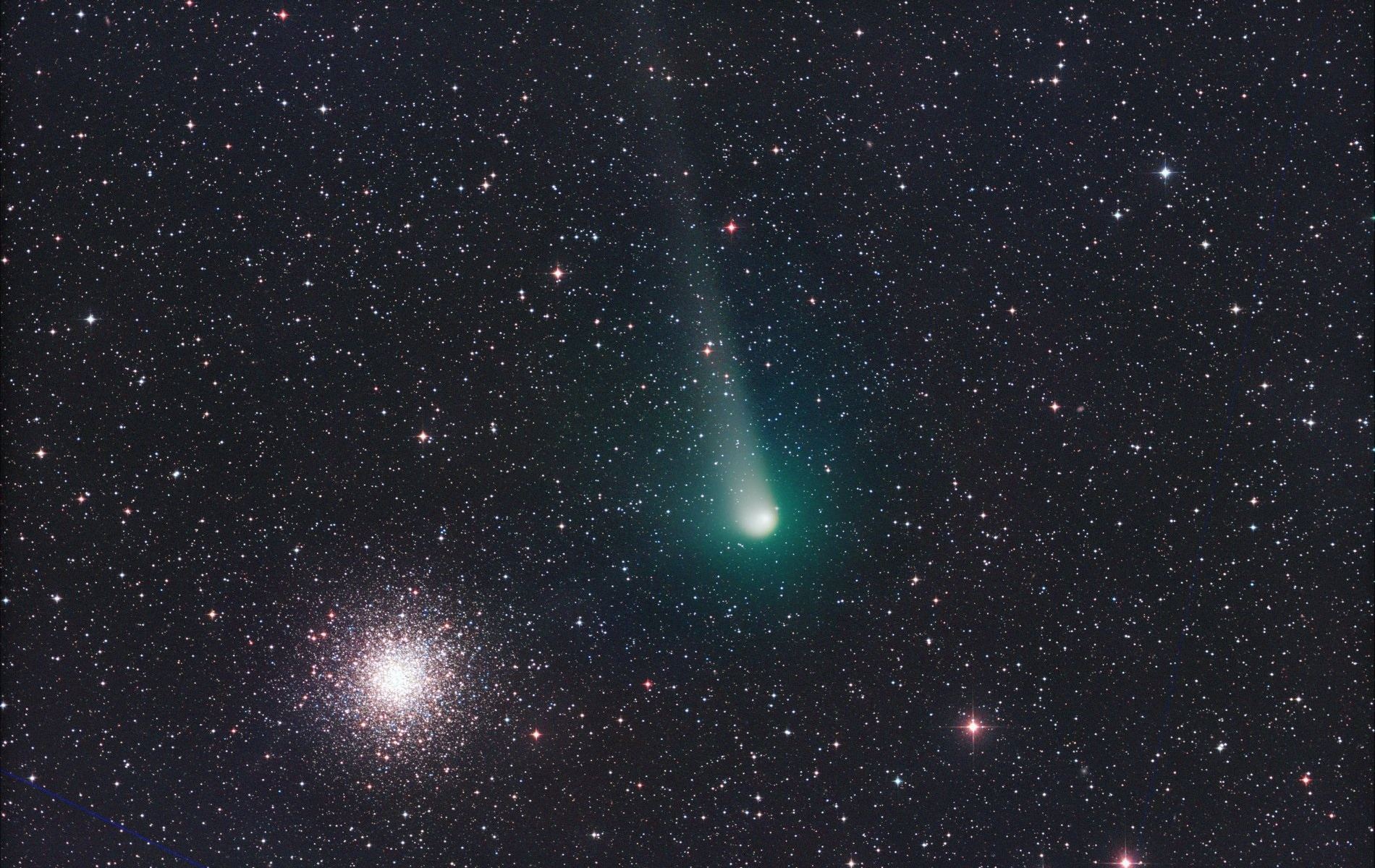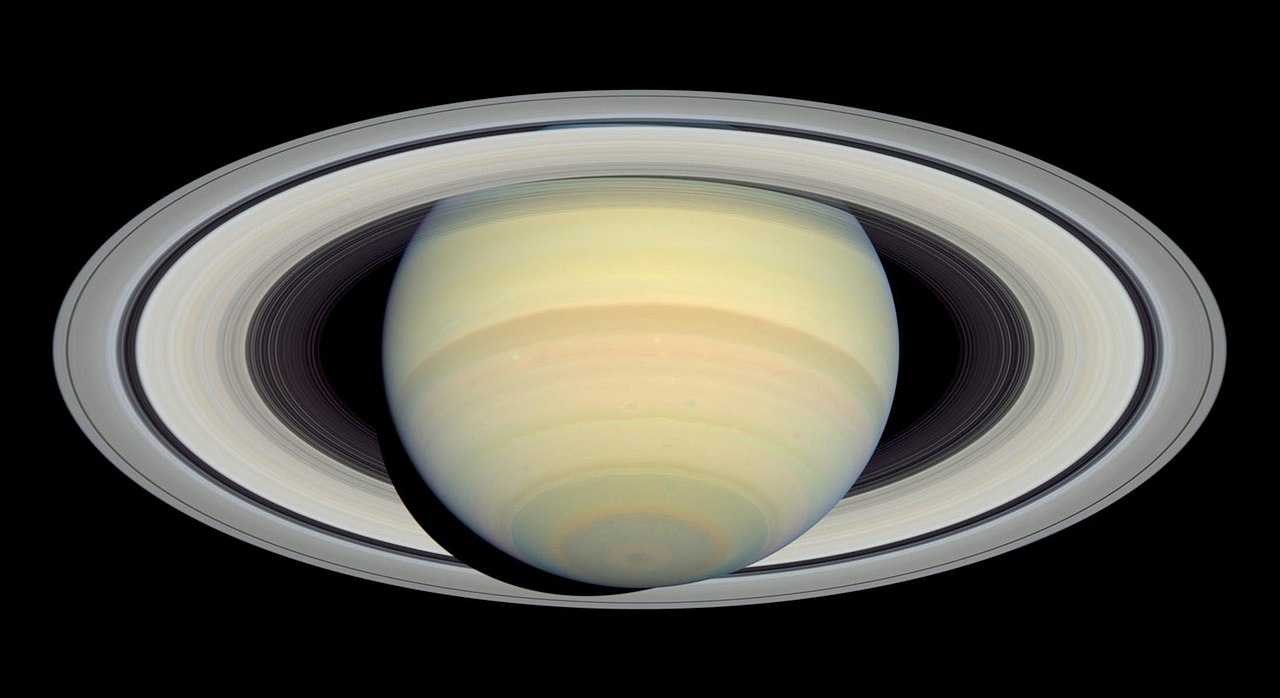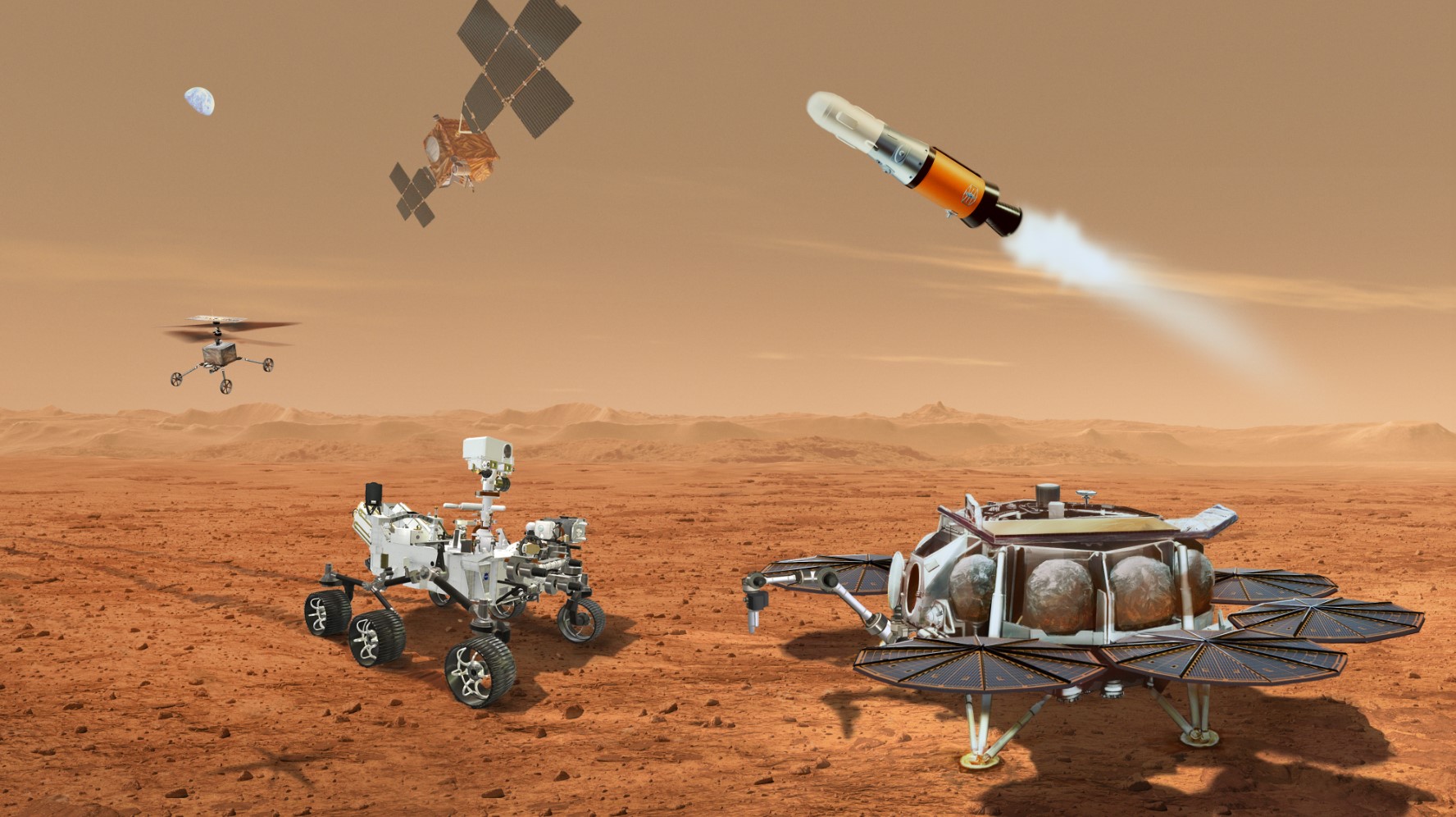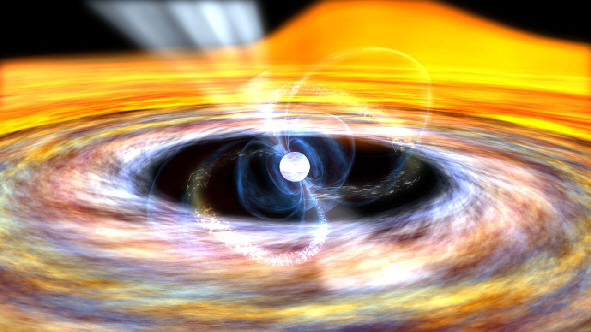On July 12th, 2022, NASA and its partner agencies released the first James Webb Space Telescope (JWST) observations to the public. These included images and spectra obtained after Webb’s commissioning phase, which included the most-detailed views of galaxy clusters, gravitational lenses, nebulae, merging galaxies, and spectra from an exoplanet’s atmosphere. Less than a month after their release, a paper titled “The JWST Early Release Observations” has been made available that describes the observations and the scientific process that went into making them.
Continue reading “Did you Want More Scientific Information About the First set of Images From JWST? Fill Your Boots”An Interstellar Meteor Struck the Earth in 2014, and now Scientists Want to Search for it at the Bottom of the Ocean
Back in 2014, an object crashed into the ocean just off the coast of Papua New Guinea. Data collected at the time indicated that the meteorite just might be an interstellar object, and if that’s true, then it’s only the third such object known (after Oumuamua and Borisov), and the first known to exist on Earth. Launching an undersea expedition to find it would be a long shot, but the scientific payoff could be enormous.
Continue reading “An Interstellar Meteor Struck the Earth in 2014, and now Scientists Want to Search for it at the Bottom of the Ocean”JWST Turns Its Gaze on the Cartwheel Galaxy
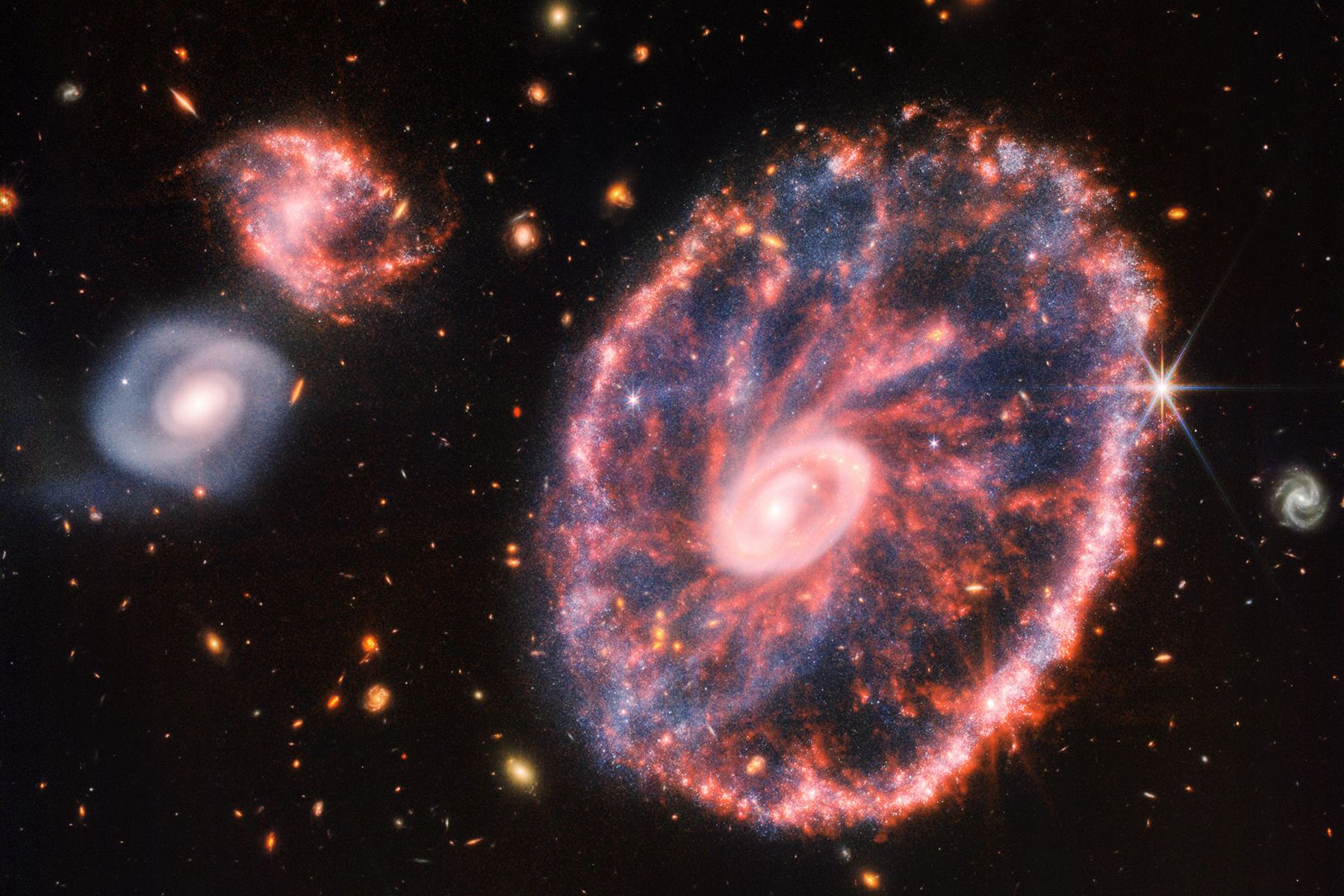
The Cartwheel Galaxy, also known as ESO 350-40, is one disturbed-looking piece of cosmic real estate. To look at it now, especially in the latest JWST view, you’d never know it used to be a gorgeous spiral galaxy. That was before it got involved in a head-on collision with a companion. The encounter happened somewhere around 200-300 million years ago. Essentially, the smaller galaxy “bulls-eyed” the Cartwheel, right through its heart. A shock wave swept through the system, changing everything. The aftermath is what we see in this latest image from JWST.
Continue reading “JWST Turns Its Gaze on the Cartwheel Galaxy”K2 PanSTARRS Still a Fine Binocular Comet Through late 2022
Long anticipated comet K2 PanSTARRS puts on its best show through the end of 2022.
An icy visitor from the distant Oort Cloud is still in view, if you know exactly where to look for it. The comet is C/2017 K2 PanSTARRS. It’s in the name: the comet was discovered five years ago in 2017, an unusually long period of lead time, even for a long-period comet. Though it (unfortunately) never entered the inner solar system, mid-2022 is the best time to see the comet, and its distance also means that—unlike swift short period comets—K2 PanSTARRS will linger in the sky for a while, for the remainder of 2022.
Continue reading “K2 PanSTARRS Still a Fine Binocular Comet Through late 2022”Stellar Flybys Leave a Permanent Mark on Newly Forming Planetary Systems
![Artist’s impression of one of the two stars in the FU Orionis binary system, surrounded by an accreting disk of material. What has caused this star — and others like it — to dramatically brighten? [NASA/JPL-Caltech]](https://www.universetoday.com/wp-content/uploads/2020/02/PIA20689_fig1.jpg)
What do UX Tauri, RW Aurigae, AS 205, Z CMajoris, and FU Orionis have in common? They’re young stellar systems with disks where planets could form. It appears those disks were disturbed by stellar flybys or other close encounters in the recent past. Astronomers want to know: did those events disrupt planet formation in the disks? What do they do? Does this happen in other systems? And, did our own solar system experience a strange encounter in its youth?
Continue reading “Stellar Flybys Leave a Permanent Mark on Newly Forming Planetary Systems”Jupiter's Giant Moons Prevent it From Having Rings Like Saturn
When the name Saturn is uttered, what comes to mind? For most people, the answer would probably be, “its fabulous system of rings.” There’s no doubt they are iconic, but what is perhaps lesser-known is that Jupiter, Uranus, and Neptune all have ring systems of their own. However, whereas Saturn’s rings are composed mainly of ice particles (making them highly reflective), Jupiter’s rings are composed mainly of dust grains. Meanwhile, Uranus and Neptune have rings of extremely dark particles known as tholins that are very hard to see. For this reason, none of the other gas giants get much recognition for their rings.
However, the question of why Jupiter doesn’t have larger, more spectacular rings than Saturn has been bothering astronomers for quite some time. As the larger and more massive of the two bodies, Jupiter should have rings that would dwarf Saturn’s by comparison. This mystery may have finally been resolved thanks to new research by a team from UC Riverside. According to their study, Jupiter’s massive moons (aka. Jupiter’s Galilean Moons) prevented it from developing a big, bright, beautiful ring system that would put Saturn’s to shame.
Continue reading “Jupiter's Giant Moons Prevent it From Having Rings Like Saturn”The Mars Sample Return Mission Will Take Two Helicopters to the Red Planet to Help Retrieve Samples
NASA’s upcoming Mars Sample Return mission plan just received a glow-up: it will now carry a pair of twin helicopters, each capable of retrieving samples and delivering them to the ascent vehicle for return to Earth.
Continue reading “The Mars Sample Return Mission Will Take Two Helicopters to the Red Planet to Help Retrieve Samples”The James Webb is Measuring Distant Galaxies 5-10 Times Better Than any Other Telescope

On December 25th, 2021, after many years of waiting, the James Webb Space Telescope (JWST) finally launched to space. In the sixth-month period that followed, this next-generation observatory unfurled its Sunshield, deployed its primary and secondary mirrors, aligned its mirror segments, and flew to its current position at the Earth-Sun Lagrange 2 (L2) Point. On July 12th, 2022, the first images were released and presented the most-detailed views of the Universe. Shortly thereafter, NASA released an image of the most distant galaxy ever observed (which existed just 300 million years after the Big Bang).
According to a new study by an international team of scientists, the JWST will allow astronomers to obtain accurate mass measurements of early galaxies. Using data from James Webb’s Near-Infrared Camera (NIRCam), which was provided through the GLASS-JWST-Early Release Science (GLASS-ERT) program, the team obtained mass estimates from some of the distant galaxies that were many times more accurate than previous measurements. Their findings illustrate how Webb will revolutionize our understanding of how the earliest galaxies in the Universe grew and evolved.
Continue reading “The James Webb is Measuring Distant Galaxies 5-10 Times Better Than any Other Telescope”A Black Hole can Tear a Neutron Star Apart in Less Than 2 Seconds

Almost seven years ago (September 14th, 2015), researchers at the Laser Interferometer Gravitational-wave Observatory (LIGO) detected gravitational waves (GWs) for the first time. Their results were shared with the world six months later and earned the discovery team the Noble Prize in Physics the following year. Since then, a total of 90 signals have been observed that were created by binary systems of two black holes, two neutron stars, or one of each. This latter scenario presents some very interesting opportunities for astronomers.
If a merger involves a black hole and neutron star, the event will produce GWs and a serious light display! Using data collected from the three black hole-neutron star mergers we’ve detected so far, a team of astrophysicists from Japan and Germany was able to model the complete process of the collision of a black hole with a neutron star, which included everything from the final orbits of the binary to the merger and post-merger phase. Their results could help inform future surveys that are sensitive enough to study mergers and GW events in much greater detail.
Continue reading “A Black Hole can Tear a Neutron Star Apart in Less Than 2 Seconds”The Heaviest Neutron Star Ever Seen Got There by Feasting on its Companion
Life’s not too good if you’re the companion of a black widow. Here on Earth, spiders by that name feast on their smaller significant others after mating. Out in space, some weird objects do the same thing to their closeby neighbors. They’re rapidly spinning neutron stars that slowly destroy their companion stars with powerful outflows of high-energy particles. A team at the University of California Berkeley is studying one of these so-called “black widow pulsars”, called PSR J0952-0607. Thanks to its hefty appetite, it shredded and consumed nearly all of its stellar companion. That eating spree made it the heaviest known neutron star to date.
Continue reading “The Heaviest Neutron Star Ever Seen Got There by Feasting on its Companion”
